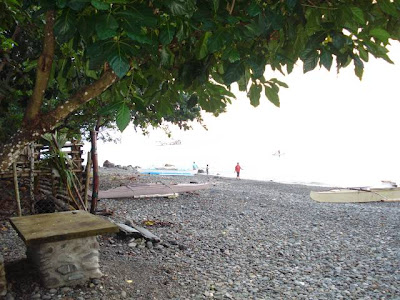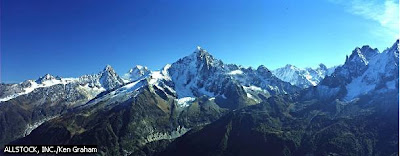
Visit my blog archives for more pictures.....
DO NOT STOP ME
Friday, August 8, 2008 at 8:45 PM Posted by Ryan Mendoza
See my blog archives for more photos.
Labels: Batangas, My Pictures, Philippines, Trip 1 comments
Taal Volcano and the Coconuts
at 8:38 PM Posted by Ryan Mendoza
See my blog archives for more photos.
Labels: Batangas, Philippines, Tourist Destination, Trees, Trip, Volcano, Water 0 comments
Sunset in Makati
at 8:36 PM Posted by Ryan Mendoza
Labels: Makati, Philippines, Sun 0 comments
Stinging Tentacles
Wednesday, August 6, 2008 at 9:48 PM Posted by Ryan Mendoza

In Barcelona, a blue patrol boats crisscross the swimming areas of beaches here with their huge nets skimming the water's surface. The yellow flags that urge caution and the red flags that prohibit swimming because of risky currents are sometimes topped now with blue ones warning of a new danger: swarms of jellyfish.
In a period of hours during a day a couple of weeks ago, 300 people on Barcelona's bustling beaches were treated for stings, and 11 were taken to hospitals.
From Spain to New York, to Australia, Japan and Hawaii, jellyfish are becoming more numerous and more widespread. While jellyfish invasions are a nuisance to tourists and a hardship to fishermen, for scientists they are a source of more profound alarm, a signal of the declining health of the world's oceans.
The explosion of jellyfish populations reflects a combination of over fishing of natural predators, like tuna, sharks, and swordfish; rising sea temperatures caused in part by global warming; and pollution that has depleted oxygen levels in coastal shallows.
Jellyfish, relatives of the sea anemone and coral that for the most part are relatively harmless, in fact are the cockroaches of the open waters, the ultimate maritime survivors that thrive in damaged environments, and that is what they are doing.
Within the past year, there have been beach closings because of jellyfish swarms on the Côte d'Azur in France, the Great Barrier Reef of Australia, and at Waikiki and Virginia Beach in the United States.
In Barcelona, one of Spain's most vibrant tourist destinations, city officials and the Catalan Water Agency have started fighting back, trying desperately to ensure that it is safe for swimmers to go back in the water.
Source: http://www.wikio.com/more/home?start=15&count=15&sort=0&wfid=66644064
Labels: Fish, International, Water 0 comments
Trees Near the Sea
Saturday, August 2, 2008 at 2:33 AM Posted by Ryan Mendoza
Labels: Philippines, Sea, Sun, Trees, Trip, Water, Zamboanga 1 comments
Delicious Lobster
at 2:26 AM Posted by Ryan Mendoza
My first treat when I arrived in Zamboanga, Philippines. See my blog archives for more pictures.
Labels: Marine Life, Philippines, Sea, Sun, Trip, Water, Zamboanga 0 comments
Magnificent Sunset in Zamboanga
at 2:15 AM Posted by Ryan Mendoza
Labels: Philippines, Sea, Sun, Trip, Water, Zamboanga 0 comments
Sunset in Zamboanga
at 2:09 AM Posted by Ryan Mendoza
Labels: Philippines, Sea, Sun, Trip, Water, Zamboanga 0 comments
My Trip to Zamboanga
at 2:03 AM Posted by Ryan Mendoza
This is my trip to Zamboanga, Philippines. See my blog archives for more pictures.
Labels: My Pictures, Philippines, Sea, Trip, Zamboanga 0 comments
Alpine System
Friday, August 1, 2008 at 10:05 PM Posted by Ryan Mendoza
Alps, great mountain system of south central Europe, forming an arc some 1200 km (750 mi) long from the Gulf of Genoa to the Danube River at Vienna. The Alps are the highest and most densely settled mountain belt of Europe, occupying an area of about 200,000 sq km (about 80,000 sq mi) and inhabited by some 20 million people. The valleys of the Alps are areas of year-round settlement; the flatter upland tracts comprise pastures and seasonally inhabited settlements, and the zone above the timberline serves as pasture and for recreation. Important economic activities include tourism, dairy farming, forestry, the production of hydroelectric power, and the extraction of salt and iron ore. With its important pass routes between central and southern Europe, the Alps have been an area of transit trade since ancient times.
Structurally, the Alpine mountain system is divided into the Western and Eastern Alps by a furrow that leads from the Rhine Valley in northern Switzerland, across Splügen Pass to Lake Como in northern Italy. The Western Alps average about 1000 m (about 3300 ft) higher and are narrower and more rugged than the Eastern Alps. The highest peak of the Alps, Mont Blanc (4807 m/15,771 ft), is on the Franco-Italian border. Among the principal ranges are the Maritime, Ligurian, Cottian, and Alpes Grées in France and Italy and the Bernese, Glarus, and Pennine (or Valais) Alps in Switzerland. The Jura Mountains are a northwestern outlier of the French Alps. From Lake Geneva the Alpine ranges curve northeast and become more widely separated, attaining a width of 250 km (155 mi) in the center of the arc. The ranges of the Eastern Alps diverge, finally to plunge to the Danubian Basin near Vienna. Well-known mountain chains of the Eastern Alps are the Bavarian Alps, Allgäu Alps, Hohe Tauern, and Niedere Tauern in the north and the Dolomite and Carnic Alps in the south.
Summit regions above 3000 m (about 9800 ft) are glaciated. Peaks and crests, however, rise above the ice, displaying jagged shapes (toothlike horns, needles, and knife-edged ridges). About 2% of the total area of the Alps is covered by ice. The longest valley glacier, the Aletsch Glacier in the Bernese Alps, is 18 km (11 mi) long.
Broad and deep longitudinal valleys, which hold the courses of the upper Rhône, upper Rhine, Inn, Salzach, Mur, and Drava (Drau) rivers, separate the structural units of the Alps, and contain the main settlements and the principal arteries for traffic. Deeply incised, transverse tributary valleys lead up to the pass regions. Passes at elevations above 2000 m (about 6600 ft) are blocked with snow during the winter months; these include the Mont Cenis, Great Saint Bernard, Simplon, and Saint Gotthard passes. Brenner Pass, at 1,371 m (4,497 ft), and Reschen Pass, at 1508 m (4948 ft), provide the easiest crossings. Engineering feats, such as tunneling of the higher passes for highways and railroads, have lessened the barrier effect of the Alps.
Source: Encarta
Labels: International, Mountains 0 comments
Foggy Afternoon in Baguio
Sunday, July 27, 2008 at 1:07 AM Posted by Ryan Mendoza
Labels: Baguio, Philippines, Tourist Destination 0 comments
Beautiful Clouds in Baguio
at 12:56 AM Posted by Ryan Mendoza
Labels: Baguio, Philippines, Tourist Destination 0 comments
SEARCH
About Me
Labels
- Animal (3)
- Baguio (5)
- Batangas (2)
- California (1)
- Clouds (5)
- Dove (1)
- Fish (1)
- Heaven (5)
- International (3)
- Makati (1)
- Marine Life (1)
- Mountains (4)
- My Pictures (2)
- Palawan (2)
- Philippines (18)
- Sea (5)
- Sun (7)
- Tourist Destination (6)
- Trees (2)
- Trip (7)
- Volcano (1)
- Water (9)
- Zamboanga (5)
My Blog List
-
TNC PREDATOR'S BEST PLAYS AT ESL ONE HAMBURG 2019 - TNC PREDATOR is your next TI Champion Watch TNC's performance at ESL One Hamburg held at Hamburg, Germany as they try to snatch the Aegis. Thank you for ...6 years ago
-
Hopkins Versus Pavlik - ATLANTIC CITY, N.J. (AP)—Bernard Hopkins gave Kelly Pavlik a boxing lesson and a first loss that he will never forget. The 43-year-old Hopkins used lightn...17 years ago






















































